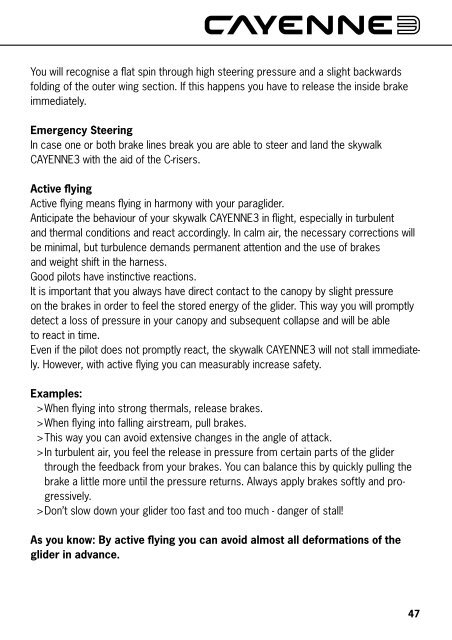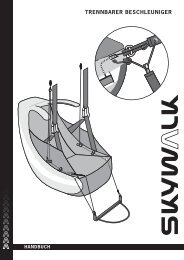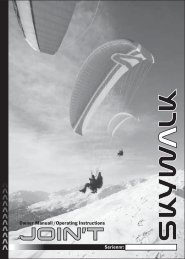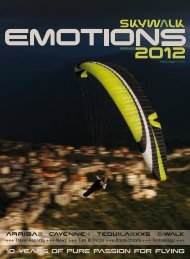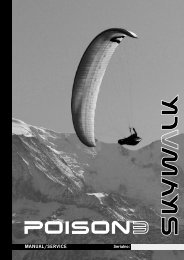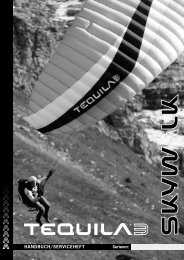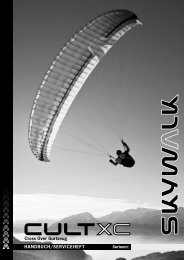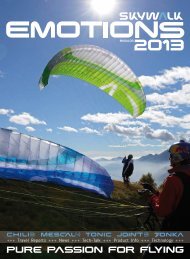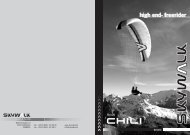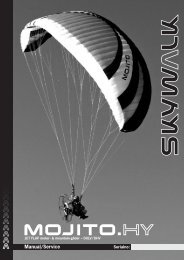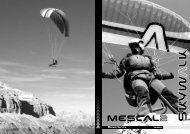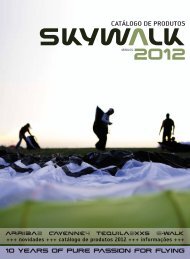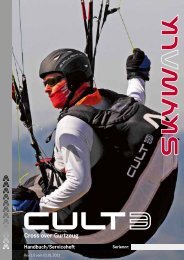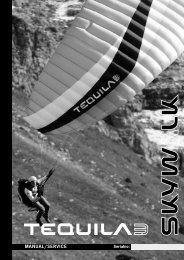Operating Instructions - Skywalk
Operating Instructions - Skywalk
Operating Instructions - Skywalk
You also want an ePaper? Increase the reach of your titles
YUMPU automatically turns print PDFs into web optimized ePapers that Google loves.
You will recognise a flat spin through high steering pressure and a slight backwards<br />
folding of the outer wing section. If this happens you have to release the inside brake<br />
immediately.<br />
Emergency Steering<br />
In case one or both brake lines break you are able to steer and land the skywalk<br />
CAYENNE3 with the aid of the C-risers.<br />
Active flying<br />
Active flying means flying in harmony with your paraglider.<br />
Anticipate the behaviour of your skywalk CAYENNE3 in flight, especially in turbulent<br />
and thermal conditions and react accordingly. In calm air, the necessary corrections will<br />
be minimal, but turbulence demands permanent attention and the use of brakes<br />
and weight shift in the harness.<br />
Good pilots have instinctive reactions.<br />
It is important that you always have direct contact to the canopy by slight pressure<br />
on the brakes in order to feel the stored energy of the glider. This way you will promptly<br />
detect a loss of pressure in your canopy and subsequent collapse and will be able<br />
to react in time.<br />
Even if the pilot does not promptly react, the skywalk CAYENNE3 will not stall immediately.<br />
However, with active flying you can measurably increase safety.<br />
Examples:<br />
> When flying into strong thermals, release brakes.<br />
> When flying into falling airstream, pull brakes.<br />
> This way you can avoid extensive changes in the angle of attack.<br />
> In turbulent air, you feel the release in pressure from certain parts of the glider<br />
through the feedback from your brakes. You can balance this by quickly pulling the<br />
brake a little more until the pressure returns. Always apply brakes softly and progressively.<br />
> Don’t slow down your glider too fast and too much - danger of stall!<br />
As you know: By active flying you can avoid almost all deformations of the<br />
glider in advance.<br />
47


